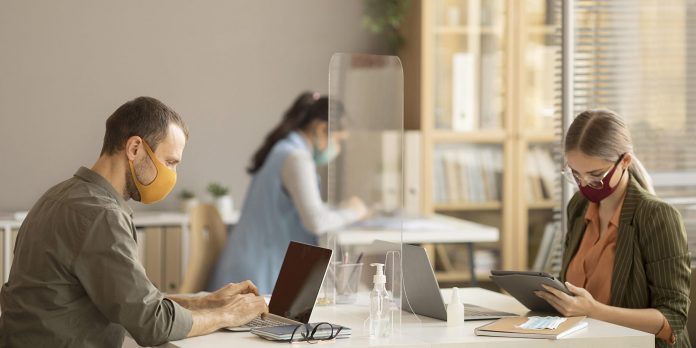By Macarena Valdés, postdoctoral researcher at (CR)2 and assistant professor of the Epidemiology Program of the School of Public Health of Universidad de Chile, and Laura Gallardo, principal investigator at (CR)2 and associate professor at the Department of Geophysics FCFM Universidad de Chile.
Since December 2019, we have been dealing with the COVID-19 pandemic. Diverse evidence has been generated regarding how this virus can spread within the population. The World Health Organization and also the Ministry of Health of Chile declare on their respective websites that the coronavirus is transmitted from person to person mainly through droplets. However, they do not refer to the transmission through aerosols, such as highlighted by the Center for Disease Control and Prevention (CDC).
A droplet is a tiny drop whose size varies between 5 to 10 microns [1], and that falls due to the effect of gravity from the moment it is emitted. On the other hand, aerosols correspond to even smaller particles, whose size is less than 5 microns, and remain suspended in the air without precipitating to the ground. When moving by the effect of air currents, the aerosols can travel several meters, transporting the virus within closed spaces, which favors the spread of healthy people when they come into contact with these aerosols. This type of transmission is called airborne transmission, and measles, chickenpox, or tuberculosis are examples of airborne diseases.
During the current pandemic, it has been mentioned that SARS-CoV-2 is transmitted from person to person, which does not imply that the airborne transmission route does not exist. An infected person releases the virus into the air (for example, by breathing or speaking), spreading as an aerosol. There are several studies in which it has been indicated that the airborne transmission route of COVID-19 is very relevant in the context of closed spaces, such as classrooms, offices, hospitals, or residences, among others. Similar evidence was generated with the genetic neighbors of the current coronavirus, SARS-CoV-1, and MERS-CoV, showing that airborne transmission in closed spaces is an opportunity to implement some preventive actions.
Airborne transmission occurs more easily in closed environments, since outside the wind can dilute the viral load present in the air that has been contaminated by a source (sick person), and ultraviolet radiation (UV rays ) is capable of inactivating viral particles. In closed environments, there is a higher concentration of viral particles in the air, which can also accumulate on surfaces or soil and facilitate transmission through fomites [2], increasing the infection probability, especially if you do not use or misuse personal protection devices.
With this in mind, the CDC outlines a list of considerations that help improve ventilation in enclosed spaces:
- Increase ventilation by opening windows and doors. If poor air quality is reported in the place where you reside, it is recommended to ventilate with caution and at times when air quality improves.
- Decrease the number of people in areas where outdoor ventilation cannot be increased.
- Make sure ventilation systems are working properly.
- If you have air conditioning, avoid air recirculation and improve filtration systems.
- Consider portable high-efficiency particulate air (HEPA) fan / filtration systems to help improve air cleanliness, especially in higher-risk areas.
On the verge of completing a year of the first case of COVID-19 in the world, with a progressive increase that a second wave is approaching in Chile (even when some specialists warn that we have not finished the first) and without a precise date to start a campaign of safe vaccination for the entire population, adding new preventive measures such as ventilation allows us to mitigate the rise in indicators such as the incidence or mortality rate, and represents the only strategy to coexist in the best way with this pandemic.
So don’t forget: mask, frequent hand washing, social distancing, and VENTILATION.
If you want to quantify the necessary ventilation, we recommend visit the webpage of José Luis Jiménez, PhD in Atmospheric Sciences. There he shows estimates for classrooms, bedrooms, and others.
Footnotes
[1] The micron (µm) is a unit of length equivalent to one-thousandth of a millimeter. For reference, a human hair measures between 60 to 80 µm in diameter.
[2] Fomites are inanimate objects or surfaces where viral particles are deposited that can come from secretions, droplets, or respiratory droplets. If a healthy person touches that object or surface, they can become infected.





